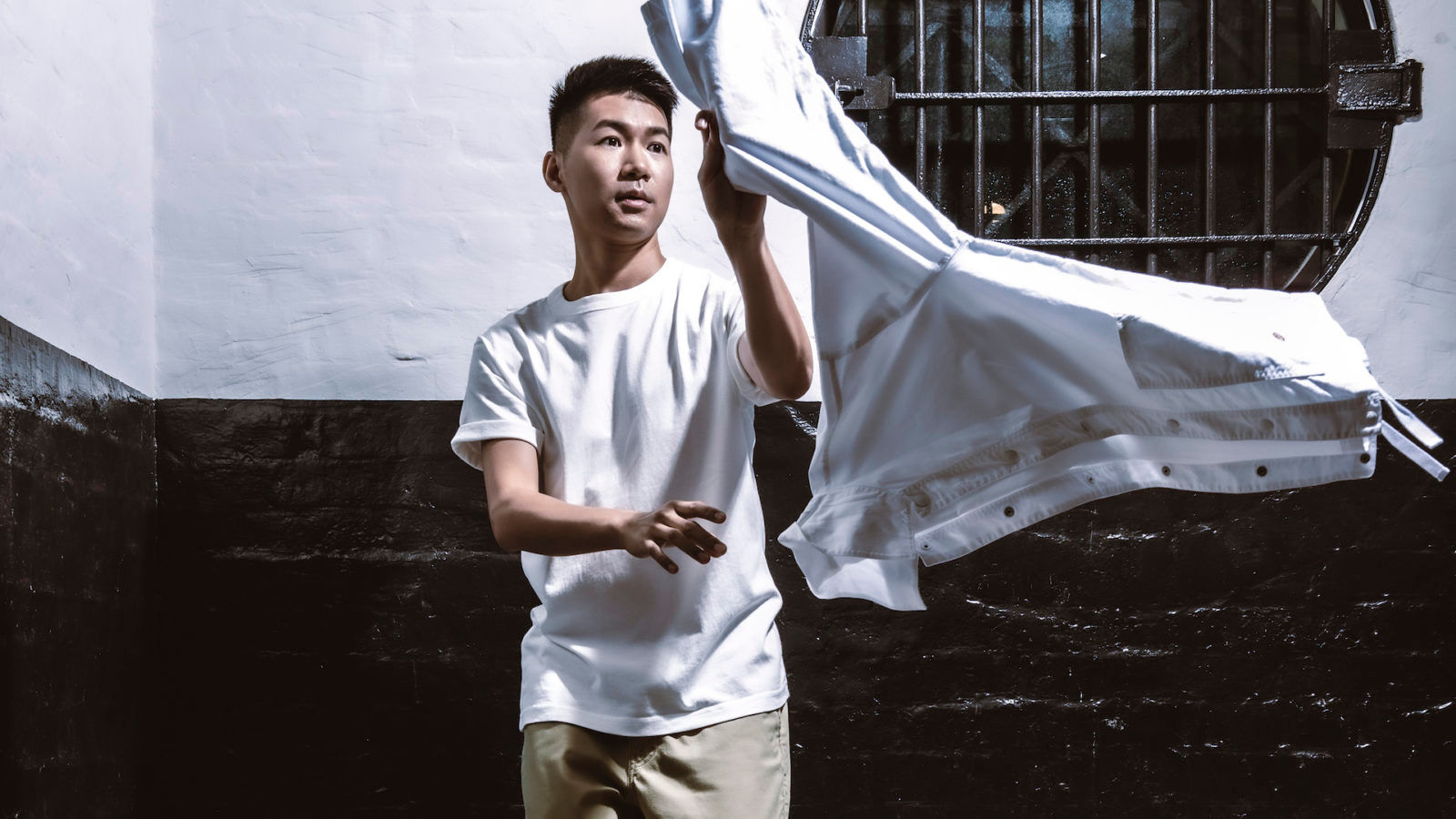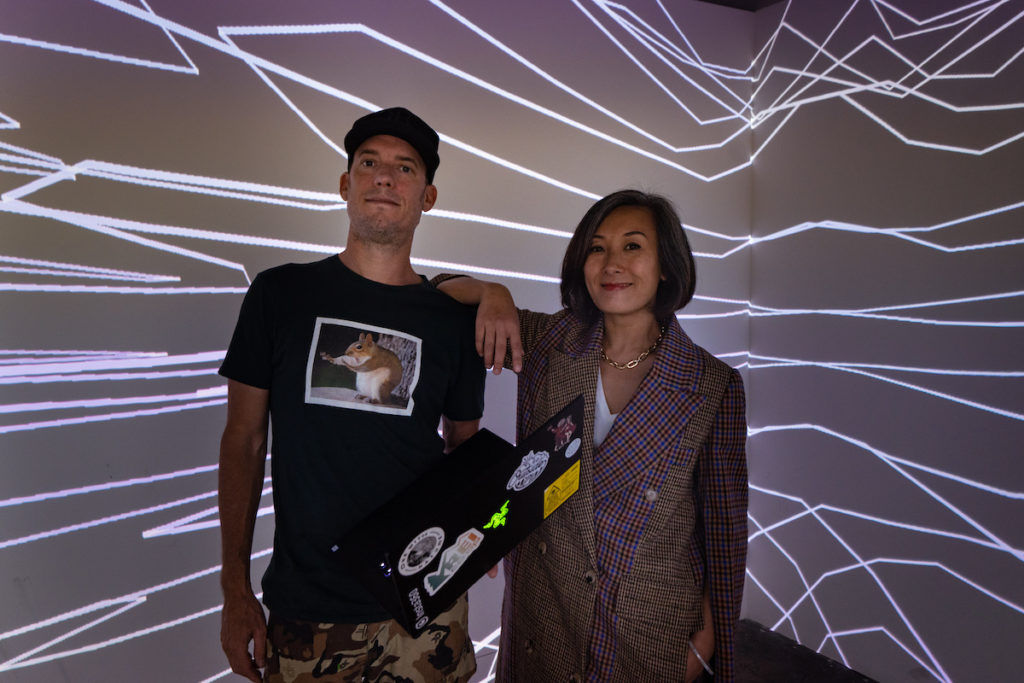Pushing through the fifth wave: How 3 Hong Kong artists have changed with the pandemic
CHARMAINE NG Editor
Composer Daniel Lo, choreographer and dancer Wayson Poon and The Collective co-founder Anita Lam share how they, like many Hong Kong artists, been forced to adapt amid multiple waves and ever-changing restrictions of the Covid-19 pandemic.
Between social unrest and a global pandemic, the last three years have not been easy for Hongkongers — personally and business-wise. Every industry has felt the impact, with those in dining and fitness taking the hardest hits. Businesses that managed to ride out the first, second, third and fourth wave are now facing their biggest obstacle ever — the Omicron surge, which began in January and has only recently begun to show signs of slowing down.

In Hong Kong, the creative industry is certainly not immune to this. With art fairs, exhibitions and workshops put on hold indefinitely, artists and creative freelancers are feeling the full force of the pandemic. Yet, somehow miraculously, not even the pandemic can stop the art world. Here’s how artists have stayed resilient and persisted throughout the last three years, and in particular, the last three months with Covid-19 at its worst.
The uncertainty of ever-changing policies
In January, the government ordered the closure of all public art venues. It felt like a blow to the local art industry; after all, it had only been months since the city’s newest creative venues, the Hong Kong Museum of Art and M+, opened their doors. Although commercial and independent galleries were allowed to stay open, visitor flow fell and naturally, the number of sales dropped.
For those in the line of work, the pandemic and its consequences meant the loss of sales, cancelled openings and delayed workshops. These are almost a given, a shared crisis felt by creatives on a global scale. But in Hong Kong, there is another layer to this difficulty, another hoop to jump through in order to survive: the city’s ever-changing regulations.

Daniel Lo, Photo: Wilson Au Yeung/HKartsFestival@TaiKwun
“The hardest part for artists is not the ban — it’s that we don’t know when the rules are going to change and when the restrictions are going to be lifted, so we can’t plan anything,” says Hong Kong composer Daniel Lo. “We didn’t have this problem in previous waves.”
Anita Lam, co-founder of Hong Kong art group The Collective, agrees. “In the past three years, we’ve gotten used to working from home and communicating digitally, so that’s not the problem. But this year, there’s a general bad vibe because of the policies.”
Indeed, the continuously changing rules have been difficult for, well, everyone. Government officials in recent weeks have offered a great deal of contradictory dialogue, from whether there will be a citywide lockdown to the possible resumption of flights from certain countries; it’s enough to drive anyone up the wall.
“For example, our current project is centred around the quarantine experience. We began working on this last year, when the required quarantine was 21 days. Then it became 14 days this year. And now, just when we are finalising things, the government reduced it to seven days,” shares Lam.
A change of perspective for Hong Kong’s artists
It’s a hard pill to swallow, but the artists have recognised that things aren’t going to change anytime soon. So how can they learn to cope, in a city where nothing is ever one hundred percent?

Wayson Poon, Photo: HKartsFestival@TaiKwun
For dancer and choreographer Wayson Poon, a change of perspective is the answer. “Living with Covid is something I’ve adopted. I’m not ignoring the pandemic, instead, I acknowledge that some things are out of my control. On a daily basis, I try to stay healthy and give off good energy, and I’ll make little changes like choosing a less crowded route when hiking, for example. Change your perspective — don’t rely on or wait for the government to give orders.”
It’s the same for Lam, who has embraced a more ‘freestyle’ way of working. “Before all of this, we would go through rigorous rounds of R&D, talk about what we want to do, draw up a year plan,” she says. “But if there’s one thing I learned from the past three years, well, planning doesn’t mean anything. Just go with the flow.”
Surviving the fifth wave and beyond
All’s well with changing their mindset, but as any Hong Kong entrepreneur will tell you, mindset doesn’t keep things afloat. Sadly, most creatives are just managing to keep their head above water with reserves and whatever they’ve managed to save up; others have been forced to find new ways to adapt entirely.
“The last year or so, we’ve been living on down payments,” says Lam. “But it’s not all bad — with experience from the past, we’ve learned to adapt and embrace. Luckily, for us as a cross-disciplined creative agency specialising in digital experiences, technical knowledge is a strong point, and we are able to survive in a digital-first world. I don’t know how it is for traditional artists though, my guess is that they may struggle without much understanding of the digital world.”
Across the world, Covid-19 has changed the way artists and other creatives conduct business. Many in the industry are now moving their businesses online. But, this is not completely new. Over the last ten years, artists have already been using online tools to market their artwork.

Co-founders of The Collective Andy Stokes and Anita Lam, Photo: The Collective
For Hong Kong artists like Lam of The Collective, whose work has always been about the digital experience, the move over to the virtual world isn’t difficult. For others, like Lo and Poon, it’s a little harder.
Both Lo and Poon are participating in Tai Kwun’s segment of the 50th Hong Kong Arts Festival at the end of this month. Yet, with the art venue shuttered, they have had to adapt their installations for an online audience.
Lo, in particular, encountered problems whilst trying to translate his work, “Glasshouse”, into a digital format. For the Hong Kong Arts Festival, he had prepared an installation in the shape of a little house with a maze-like passageway that the audience could physically enter and be surrounded by, challenging the notion of free will through the sound arts. In the end, he sought the help of The Collective, who helped him turn “Glasshouse” into a virtual setup.
Likewise, Poon had prepared a one-on-one dance performance named “Stillness”. The highly personal and immersive experience is reserved for one at a time, creating a spiritual connection between dancer and viewer to encourage them to communicate with and confront their own bodies. Due to government restrictions, Poon can no longer perform the dance live, but it can be viewed on the Hong Kong Arts Festival website.
Looking forward with hope
It all sounds very discouraging, but there’s a silver lining to all the chaos. During the downtime, artists have found ways to work on themselves.
Lo’s projects usually take two years to realise, so for the past three months, he has been setting aside time to compose, as well as plan future projects. Poon, too, has been enjoying the extra time he can put towards his dance rehearsals. As for The Collective, Lam and her team are just grateful to be able to choose what projects they want to do now.
“In the past, we had a much bigger team and we used to do more commercial projects to pay our staff,” shares Lam. “Now that we are a smaller team, we can choose our projects and what we want to do. We don’t want to accept any more meaningless jobs since life is already so hard, you know what I mean? Now we only do things we enjoy and things that bring something positive to the city.”
Catch “Glasshouse” and “Stillness” on the Tai Kwun Hong Kong Arts Festival website here at the end of April, and discover The Collective’s digital experiences on its website here.
(Lead image: HKartsFestival@TaiKwun, Featured image: The Collective)